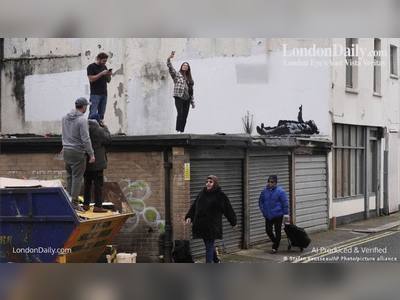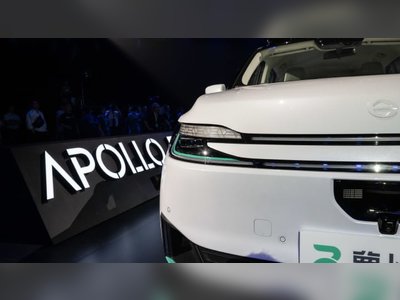
The British Army Invented Tanks. Now It Could Kill Them.
The British Army is quietly floating a proposal to send its main battle tank fleet to the scrapyard. The shocker would end more than 100 years of development and deployment by the very country that invented the tank.
Instead, the British Army would concentrate on space and cyber warfare, as well as contributing helicopters and airmobile troops to any NATO fighting force. The move would follow in the footsteps of the Netherlands, a country that eliminated—and then quickly rebuilt—its tank force.
The proposal would see the British Army’s 227 Challenger II main battle tanks eliminated from its force structure. The Challenger II, originally one of the best tanks in NATO, hasn’t received a steady stream of upgrades the way the American M1A2 Abrams has and is considered obsolete by today’s standards. The Challenger II needs new, uprated engines, new fire control systems, and a new 120-millimeter main gun to match the gun on U.S. and German tanks.
The U.K. has had tanks for more than a century, and in fact invented the concept of the tank as a tracked, armored fighting vehicle. The name “tank” comes from the cover story used to hide the development of a new offensive weapon designed to break the deadlock of World War I trench warfare. The vehicles were developed under the guise of building transport vehicles to carry water to the front lines.
The British Army fielded the world's first tank, the Mark I, in 1916, and during World War II, introduced such impressive designs as the Crusader, Matilda Mark II, Churchill, and Cromwell. The Cold War saw the army equipped with the Centurion, Chieftain, and later, the Challenger I. The British Army introduced its current main battle tank, the Challenger II, in 1998.
The U.K. fields just 227 Challenger IIs, compared to the 6,333 tanks the U.S. military operates. In 2019, London proposed upgrading just 148 of the 227 tanks to a modern standard, leaving it with one of the smallest—albeit effective—tank forces in the world. That proposal has apparently been sidelined in favor of scrapping the fleet entirely.
The U.K. Ministry of Defense proposes to delete the British Army’s tank force and instead shuffle the money to fund greater space and cyber capabilities. It would also emphasize helicopters and presumably airmobile forces in its contribution to NATO, as the Army flies 50 Apache attack helicopters and operates an air assault brigade trained to conduct heliborne operations.
This isn’t the first time a NATO country has ditched its tanks. In 2011, the Royal Netherlands Army eliminated its 60-strong force of Leopard II tanks, arguing the future lay in lightweight, rapidly deployable combat forces structured for conflicts such as the fight against the Islamic State or the Taliban in Afghanistan.
The proposal would see the British Army’s 227 Challenger II main battle tanks eliminated from its force structure. The Challenger II, originally one of the best tanks in NATO, hasn’t received a steady stream of upgrades the way the American M1A2 Abrams has and is considered obsolete by today’s standards. The Challenger II needs new, uprated engines, new fire control systems, and a new 120-millimeter main gun to match the gun on U.S. and German tanks.
The U.K. has had tanks for more than a century, and in fact invented the concept of the tank as a tracked, armored fighting vehicle. The name “tank” comes from the cover story used to hide the development of a new offensive weapon designed to break the deadlock of World War I trench warfare. The vehicles were developed under the guise of building transport vehicles to carry water to the front lines.
The British Army fielded the world's first tank, the Mark I, in 1916, and during World War II, introduced such impressive designs as the Crusader, Matilda Mark II, Churchill, and Cromwell. The Cold War saw the army equipped with the Centurion, Chieftain, and later, the Challenger I. The British Army introduced its current main battle tank, the Challenger II, in 1998.
The U.K. fields just 227 Challenger IIs, compared to the 6,333 tanks the U.S. military operates. In 2019, London proposed upgrading just 148 of the 227 tanks to a modern standard, leaving it with one of the smallest—albeit effective—tank forces in the world. That proposal has apparently been sidelined in favor of scrapping the fleet entirely.
The U.K. Ministry of Defense proposes to delete the British Army’s tank force and instead shuffle the money to fund greater space and cyber capabilities. It would also emphasize helicopters and presumably airmobile forces in its contribution to NATO, as the Army flies 50 Apache attack helicopters and operates an air assault brigade trained to conduct heliborne operations.
This isn’t the first time a NATO country has ditched its tanks. In 2011, the Royal Netherlands Army eliminated its 60-strong force of Leopard II tanks, arguing the future lay in lightweight, rapidly deployable combat forces structured for conflicts such as the fight against the Islamic State or the Taliban in Afghanistan.










